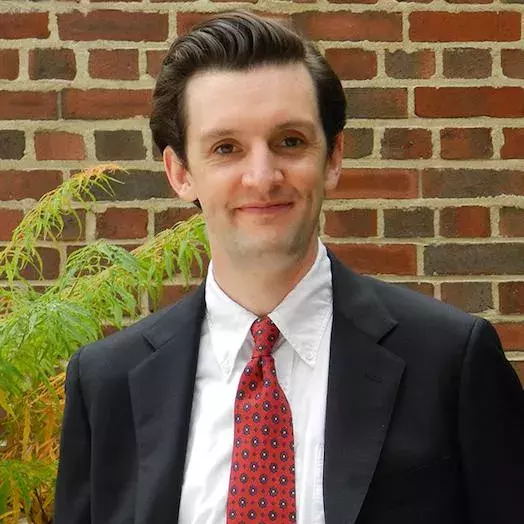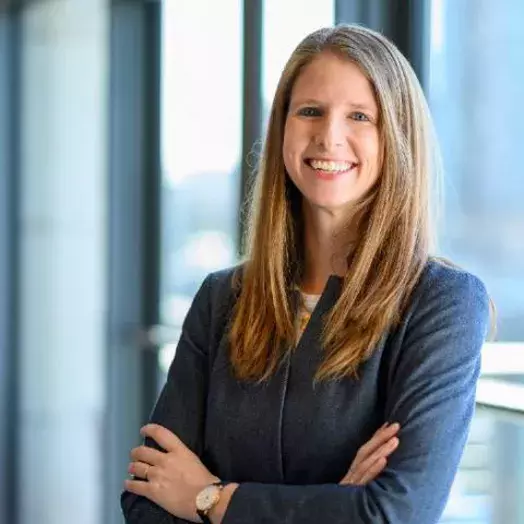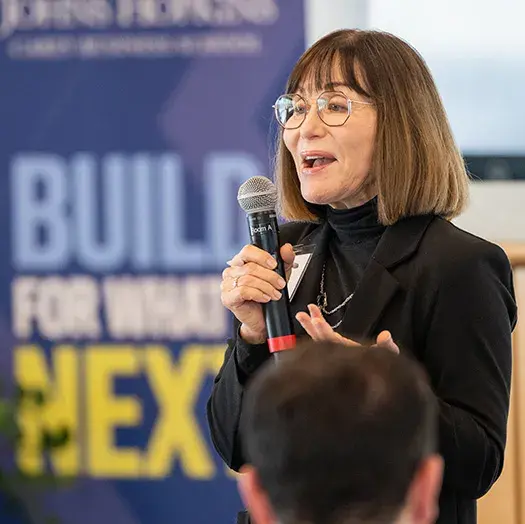After earning his PhD in economics from the University of Chicago, Brandon has joined the Johns Hopkins Carey Business School’s full-time faculty as an assistant professor on the research track.

Curiosity Created a Career: How New Faculty Member Alec Brandon Became an Economist
As an undergraduate at the University of Chicago, Alec Brandon decided to sit in on a course he hadn’t even registered for. It was an economics class whose title intrigued him.
That concession to curiosity started Brandon down a path that has led him to a position on the full-time faculty of the Johns Hopkins Carey Business School. An assistant professor on the research track, Brandon is one of seven new full-time faculty members introduced by Carey in summer 2020, not long after he earned his Ph.D. in economics from Chicago.
In the following Q&A, Brandon talks about the fateful day he checked out that interesting-sounding class. He also discusses his studies in behavioral economics, his teaching plans for spring 2021, and the impact of the COVID-19 pandemic on his work.
QUESTION: How did you first become interested in economics? And at what point did you determine that it would become your career?
ALEC BRANDON: In college, I thought it would be interesting to attend the first lecture of a class being offered called “Experimental Economics.” I wasn’t registered for the course, but thought I would sit in to see what it could be about. The first thing we did in the class was participate in an experiment where some in the class were buyers and others sellers. After executing trades for about five minutes, the instructor opened a sealed envelope that had perfectly predicted the price and quantity of the trades in the market. That’s really when I got hooked. Suddenly the supply and demand curves that predicted prices and quantities in theory were both tangible and testable.
Q; Your bio on the Carey website says that your research focuses on “the impact of public policies and the behavioral mechanisms driving those impacts.” Could you give an example of a research study in this vein?
A: One example of this kind of research is a paper I just presented on social nudges. By a social nudge, I mean an intervention that provides information on the behavior of peers. If you look at the response to this kind of intervention, you see that they almost always produce an initial change in behavior. For example, if you get a letter saying that all your neighbors voted in the last election, you will be more likely to turn out and vote in the next election. However, as time goes by, the effect of some of these social nudges rapidly disappear, while others persist for years.
As an academic, I find this variation in persistence puzzling. After all, how could the same intervention produce such different effects? But this is also an important policy question. If we can understand what explains this variation in persistence, we might be able to better design interventions that pay off for years instead of weeks. To get to the bottom of this, I (with co-authors) partnered with a company called Opower that had designed the most persistent social nudge. This social nudge is simply a mailer that compares a household’s electricity consumption to the consumption of their neighbors. Miraculously, more than 70 percent of the initial effect of this intervention persists more than two years after the mailers stop going out.
What to Read Next

research
All Together Now: New Faculty Member Anna Mayo Makes a Study of TeamworkTo get at the mechanisms that might be driving this persistence, the study looks at persistence with a sample of movers. It turns out that as soon as a household moves, Opower would stop sending their mailer but could still observe energy consumption in the house. This sample seemed pertinent because it could help determine how much of the intervention’s persistence was driven by adoption of energy- efficient technology. What else could explain a mailer’s effect staying in the home after the original household moves? Interestingly, we find that the effect of the social nudge does stay in the home after the original household moves, and, depending on how you analyze it, this can explain the majority of the persistence found in past studies.
One implication of this finding is that informational campaigns might be able to spur longer-lasting changes in behavior by focusing on settings where there is readily available tech that can be adopted. If there isn’t, though, the researcher or policymaker could still leverage our findings by also designing their own tech to spur persistence. For example, letting households know they should save for their retirement might lead to longer-lasting changes if it also gives households the option to enroll in a default savings program.
Q; Could you briefly describe any other research projects you’re currently working on?
A: Last year I partnered with the rideshare company Lyft to try and answer this provocative hypothesis in behavioral economics. The hypothesis is that workers are income targeters. That is, they work until they hit a target income on a given day. For a company like Lyft, evaluating this hypothesis is important, because it means they should be targeting their incentives to drivers who are facing a low hourly wage on a given shift. To assess this hypothesis, Lyft drivers were randomly assigned to receive $2 or $40 after completing a ride late in their shift one day. In response, we see that receiving the $40 causes drivers to end their shift at the same rate as drivers getting the $2. These data reject the income targeting hypothesis.
Q; Do you have plans to make use of Johns Hopkins resources, such as departments and agencies within the university and medical system, in your work as a Carey researcher? If so, what would they be?
A: Definitely! There are so many applications of behavioral economics to health. Reaching out to partner with researchers in the School of Medicine is high on my list of plans. Nothing super concrete yet, though!
Q: Concerning your work, what do you see as the main challenges, as well as any opportunities, to emerge (near term and/or long term) from the COVID-19 pandemic and resulting lockdown?
A: For an experimenter, these are strange times! We can’t conduct in-person research, which is how the vast majority of experiments are conducted. At the moment, I’m just keeping my head down and trying to wrap up old projects.
Q: Are you teaching any classes during the 2020-2021 academic year? If so, what are they? And how have you been preparing for the pivot from traditional classroom instruction to remote learning?
A: I’m currently slated to teach in the spring. My class is called Economics for Decision Making. As a new faculty member, I’ve never taught this class in-person, so I'm not sure I’d consider this a pivot, but one thing I’m excited to try is to illustrate the concepts to students by having them participate in online experiments.


